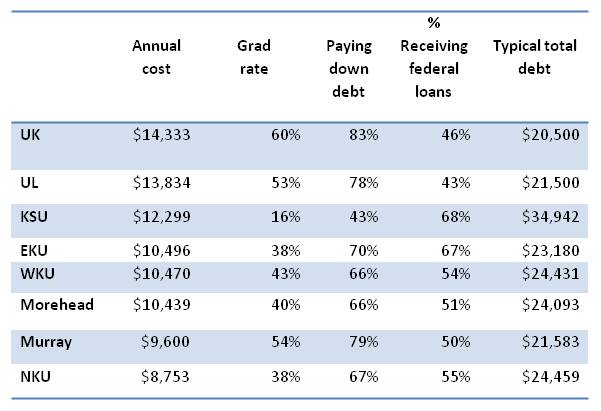

Unlike the older, nontraditional students, however, there is some evidence of declines in for-profit degree completion and increased enrollment at community colleges among the high school graduates, but these results are fairly small and sensitive to empirical specification. Similarly, for high school graduates, we find that for-profit enrollment remains strong. For older, nontraditional students we find no impact on enrollment or degree completion outcomes.

We find that restricting the use of the Cal Grant at for-profit institutions resulted in significant state savings but led to relatively small changes in students' postsecondary trajectories. Linking data on aid application to administrative payment and postsecondary enrollment records, this paper utilizes a difference-in differences strategy to investigate students' enrollment and degree completion responses to changes in subsidies. Beginning in 2011, California tightened eligibility standards for their state aid program, effectively eliminating most for-profit eligibility. We use student-level data to examine how eliminating public subsidies to attend low-performing for-profit institutions impacts students' college enrollment and completion behavior. Federal and state regulations often reflect concerns about the private, for-profit sector's poor employment outcomes and high loan defaults, despite the sector's possible theoretical advantages.
STUDENT LOAN DEFAULTS FULL
To read the full report, please click here.This paper examines how financial aid reform based on postsecondary institutional performance impacts student choice. Overall, the report notes that making IDRs the only way to repay student loans, with an option for pre-payment, and making repayment automatic would reduce student loan defaults and increase repayment rates of student loans. Handle contingencies and non-standard cases separately: citing exceptions like non-standard income reporting or tax deductions working against required payments, the report cites the need to consider these cases separately to alleviate harm to students and taxpayers.
STUDENT LOAN DEFAULTS HOW TO
Automatically deduct payments from paychecks through withholding: the premise of IDRs is not controversial, but the logistics of how to implement is, due to challenges in cross-agency collaboration.Make IDR the only repayment option: this is common practice in other international higher education sectors and balances between high loan amounts and no-cost college where those who could afford it would not have to pay.The author suggests three main recommendations to revise the student loan repayment system: So, what does this mean for student loan repayments? The author comments on the “importance of simplification of getting better outcomes”. Citing the recent movement to simplify FAFSA applications, they argue the need to do the same for student loan exit counseling and repayment education. Given that student loan defaults are highest among students with low debt, who may not have a degree, and receive salaries that make loan repayment less viable, Kreisman argues that “all evidence points to this as a policy failure costing both students and taxpayers”. Within 30 days of the loan transferring to a collection or guaranty agency, you will be sent a letter notifying you of this transfer and who to contact to resolve the default. The author conducted an experiment in which 542 undergraduate students participated in a real-life simulation of the student loan exit counseling website. Using this simulation, students in the experimental group chose a repayment plan based on a variety of factors, including earnings of recent graduates. Results from the study found that those receiving the standard student loan counseling chose the traditional repayment plan at 63 percent, but when provided the IDR plan as the standard, more students chose to stick with the IDR payment plan rather than revert to the traditional system. Student loan repayment is again becoming a hot topic in higher education as the pause on student loan payments will end after January 31, 2022. In the report, Daniel Kreisman notes concerns that a return to repayment of loans would result in a large default across borrowers. However, this may not be the case, particularly if borrowers take advantage of income-driven repayment plans (IDRs). Enrollment remains the main challenge in an IDR plan, with borrowers automatically entered into fixed repayment plans upon graduation. Title: Unforced Errors: How One Simple Fix Could Improve Student Loan RepaymentĪuthors: Daniel Kreisman, Georgia State University


 0 kommentar(er)
0 kommentar(er)
